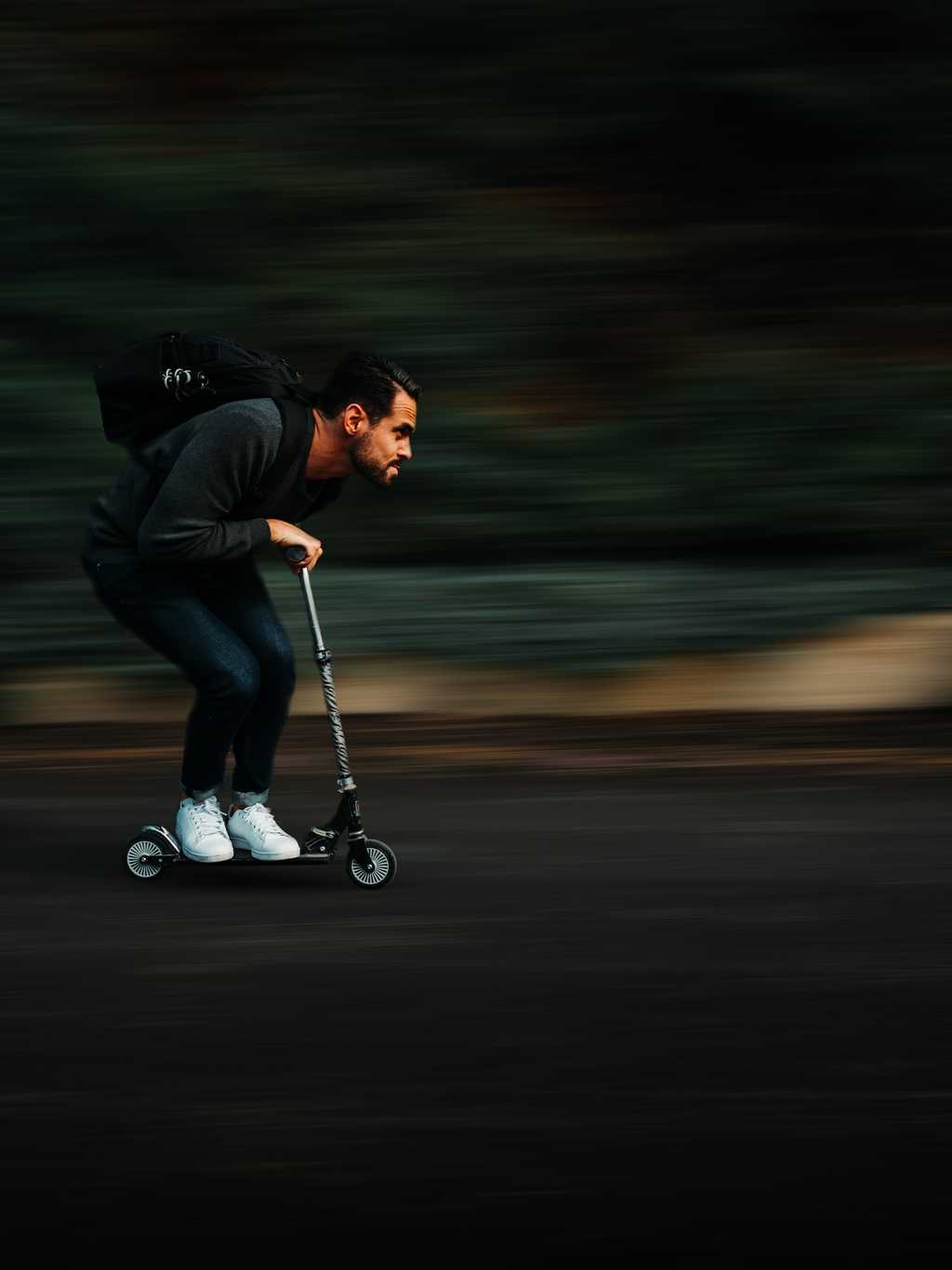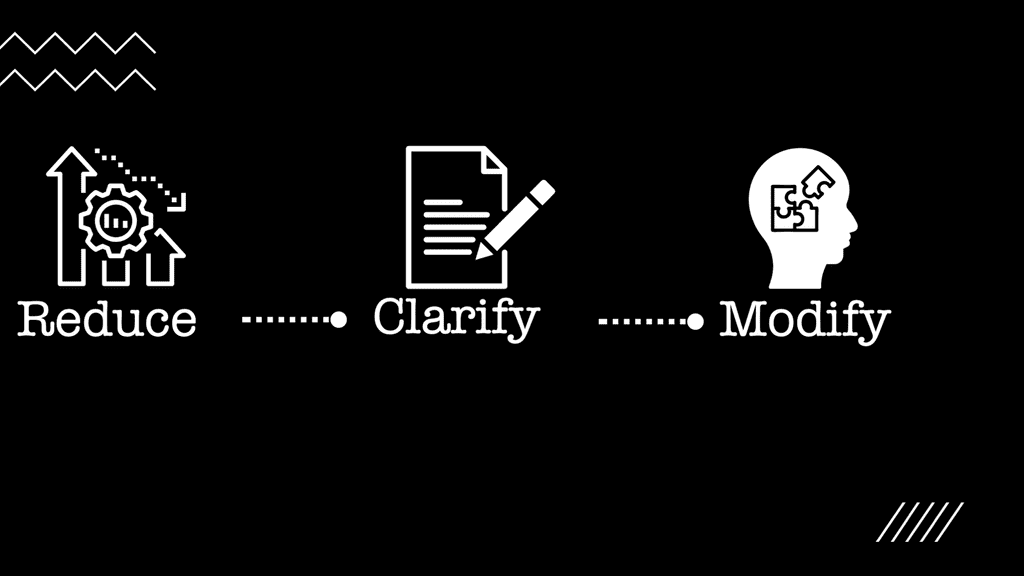(• Reading Time: 18 minutes •)
This guide is based on 5 years of applying techniques from Behavioral Psychology and research on productivity. I've used it as a developer, mentor and creator.
And it works.
If you remember only one lesson from this post, it's this:
The productivity techniques that work are built on principles. Not quick hacks. Or fancy tools.
If you understand and apply this, you'll be able to keep a clear head and stay focused. And it'll come in handy especially when things blow up out of proportion.
What this post will cover
- Part I: Process >> Tools
- Part II: What to do when you can't stop procrastinating
- Part III: Put sanity over execution
Let's jump into it.
Part I: Process >> Tools
Whenever you feel overwhelmed, it’s because the process you have in place is failing you. Not the tools.
And a sound process will beat fancy tools, any day.

Before I understood this, I struggled with consistent productivity. Keyword here is consistent.
Anyone can be productive once in a while but it takes a certain level of finesse to do it consistently.
Back then, I did a lot of things. But constantly felt like I was missing something. My approach was speed and execution over anything else. This works in the short term but it's not sustainable longterm.
Before I got here, I seriously struggled with productivity. I knew life hacks here and there; and tried every tool under the sun including the popular ones:
- Evernote: Your notes. Organized. Effortless.
- Google Keep: Quickly capture what’s on your mind.
- One Note: The digital note-taking app for your devices.
- Any.Do: To do list app with Calendar, Planner & Reminders.
- Todoist: The to do list to organize work & life.
Oh and I tried Trello at least 3x because everyone swore it was the greatest app ever.
But I couldn’t stand it.
Every few months, I’d jump between apps.
Once in a while, I'd ditch digital and go all paper. But then forget my notebook at home or hate to carry it around because it couldn’t fit in my pocket.
Nothing worked – I still felt overwhelmed with tasks to complete. But overtime, I learned that:
The best tool used with the wrong process feels like a failed tool.
So I shifted my approach to focus on processes. And it worked. My productivity and time management skills skyrocketed.
It doesn't matter what app you prefer to use, these 4 simple processes I share can be used in your favorite todo app.
Mine happens to be Google Keep. But as you read through, I want you to replace “Google Keep” with “Todoist”, “One Note”, or whatever app you love the most.
Focus on the big picture of how things fit because this is the most important aspect of using any tool.
Make sense?
Let’s get to it!
1) Find your single source of truth

I use Google Keep as my single source of truth that feeds into other productivity tools. This means it’s my first stop.
First stop for:
- Grocery list
- Journaling
- Workout plans
- Strategy for finances
- Netflix shows to checkout
- Any random thought that crosses my mind
Each of these have their own labels so capturing things usually takes a few taps on my phone or three clicks on a chrome tab that’s always open with Google Keep.
From there I move to Calendar for fixed appointments and to eyeball how much time meetings consume per week.
Then Trello for team tracking collaborations.
Next, I switch between Notes for personal writing or Google docs for collaborations. What’s interesting here is that most of my write ups start in Keep on my phone.
Including this write-up.
When it starts getting longer I switch to my laptop and copy out the content from Google Keep web into Notes or Google Doc.
Any time it feels like I need special formatting or the itch to write in my favorite font (Montserrat font), it’s a sign that I need to switch to a writing tool.
Switching to another tool isn’t necessarily a bad thing.
But not many believe that.
If finding your single source of truth is the only idea you put to action right away, you'll see a dramatic change.
But if you miss this, you'll struggle with staying afloat when you start feeling overwhelmed. Trust me, things will get overwhelming.
2) Stop chasing the everything app

This one is a little controversial.
And in the past, some have contested my stance especially after a new tool becomes popular (e.g. Notion).
Most people try to hack their favorite productivity app to become a writing app, a collaboration tool, a calendar app, an EVERYTHING tool.
The fact is that no one tool will address everything.
I made this mistake for so long.
Trust me, you’re better off picking up a single source of truth and then building others around it.
- It’s fine to use Keep and Trello.
- It’s fine to have Notion and Notes.
- It’s fine to use a todo reminder and calendar.
One doesn’t have to replace the other. They can complement each other.
3) It's not paper OR digital; it's paper AND digital

Once in a while I get the itch to write on paper.
That feeling is especially strong when I’m planning big goals. I love to map out everything in front of me.
And writing with my favorite pen keeps the ideas flowing.
In paper situations, I scribble all on paper then when I get done, I take a screenshot and add it under the relevant label in Keep.
Example, if you saw my “big ideas” label you’d see a lot of screenshots in there.
I also do this when white-boarding with colleagues on a coding project or brainstorming sessions.
- Get done.
- Take picture.
- Add to specific label.
Then I trash the paper.

Multiple years of writing on paper has taught me that the paper I write on only feels good in the moment.
A few weeks later and it looks like I’ve got paper trash all over the place.
So I screenshot and trash ASAP.
This process satisfies both my digital access to my planner (beats small notebooks any day). But it also lets me scratch my paper itch whenever it comes up.
I'm not loyal to only digital or only paper. That's nonsense.
I'm more interested in what helps me reduce my overwhelming workload. And using both work well.
You may want only paper or only digital. That's okay. Just remember you don't have to feel you must only use one to be productive.
Some recommend Rocketbook (a smart notebook). It is a reusable notebook that lets you write, upload to the cloud, and then wipe the page clean!
I’ve never used it but wanted to highlight this in case you find it useful.
4) Review often – weekly, monthly, yearly

Every morning on weekdays I go through Keep on my laptop to see things that should be top of mind that day.
This is key to proactively prevent me from getting to a place where I feel overwhelmed with tasks because too many things slipped through.
During the day, I add things to Keep either from my phone or laptop. The cycle continues until Friday.
Every Friday, I go through my Keep to clean up any tasks that fell through or that should move into other tools.
Then repeat.
Following this gets you right in the heart of smashing things efficiently but sometimes, procrastination blocks your progress.
• • •
Part II: What to do when you can't stop procrastinating

Do you know that 80% of us fail to fulfill our New Year’s resolutions?
That's crazy.
Sadly, procrastination plays a big role in this.
But no worries, you can beat procrastination through these three techniques: reducing your “perfect” goals, clarifying your next actions, and modifying your steps through Behavioral Psychology.
Let's dig into these one by one.
1) Reduce your first move from “A+” to “B”.
If you're a perfectionist, you'll procrastinate. If your goal is too big to take a first step, you'll procrastinate.
If you're a procrastinating perfectionist, you'll feel paralyzed and frustrated many times because your big goals remain in your head with zero actions in reality.
You'll take zero actions because you want all your steps to be perfect.
To fix your procrastination as a perfectionist, start with a “B” goal instead of “A+”. This means you should go back and change your first step to be “good enough” instead of “perfect”.
2) Clarify the next, tiny action.
Whenever it’s not crystal clear what you’re supposed to work on next, your mind will stop you from moving forward.
Example your todo list has:
Build the best portfolio page to get a job. Then create amazing landing page to show off to everyone.

But:
- What does “best” mean?
- What type of programming projects should I have in my portfolio?
- Is it smart to build my app from scratch or use an existing template?
- Which language should I learn? How long? When? How?
When you have too many floating thoughts in your head, your mind runs away from any actions and falls back into procrastination.
The cure is to spend 90 seconds and answer:
What is the smallest, next action for the task I want to achieve?
For example:
- If you’re building a portfolio, the next tiniest action is open up a document and write up a rough plan. Not to open visual studio and struggle with the quirks in C++.
- If you're writing a book on lessons for new programmers, your tiniest action isn’t to write chapter one. It’s to come up with the first DRAFT of your outline for the all book chapters.
- And if you’re completely new to programming, your best bet is to start with places where you can learn to code so you narrow down on one option. Not to jump around aimlessly and still feel lost after several months.
The tinier the next action, the more likely you are to get it done.
Stack multiple small actions and you, my friend, are gold.
3) Modify through techniques from Behavioral Psychology

Some days are just lazy days.
You know you should ignore how you feel and get to work but it's not happening.
You can use these principles of from Behavioral Psychology.
- Deadline effect: Go to www.tomato-timer.com, click 5 minutes and start working on your tiniest next action as fast as you can. Most times you’ll end up going beyond 5 mins. That’s perfect because Zeigarnik effect has kicked in and you'll feel like completing the work you already started.
- Negative reinforcement until you work: If somehow you didn't do anything and the timer ends, restart it. Additional tip is to go to setting and set the sound that is most annoying to you. Do this at least 5x and every time “punish” yourself by watching the timer count down!
- Revisit your motivation: If after 5x, you can’t do anything, it means your motivation is off and you have a deeper question to answer:
“What will I gain by I work on this?”
Sometimes, looking to how other developers have transformed their lives can give you the needed push.
If you still have no answer to what you’ll gain, abandon the task as it's time to find something else that has more intrinsic motivation.
But no matter how much you get done, it's important to recognize that productivity is not about working non-stop.
You need balance to consistently move forward.
• • •
Part III: Put sanity over execution

Getting things done is not always about doing more. Sometimes you don't need faster, better.
You need the sanity from self care.
“Self-care is never a selfish act. Anytime we can listen to true self and give the care it requires, we do it not only for ourselves, but for the many others whose lives we touch.” - Parker Palmer
If you don't prioritize self care, you'll definitely burn out. Trust me, developer burn out is real.
Burn out too many times and you start to think maybe you're not cut out for the work.
You are.
Your approach is simply what's killing you.
Here are simple ways to start caring more for yourself. These little activities don't come close to the hype that people expect when they hear 'productivity'.
But you need them.
Have a different spot for work and relaxation

I've found that relaxing in the same spot and later trying to work doesn't cut it.
Same applies when flipped around: working in the same spot and later trying to switch to relaxation mode is hard.
You don't need separate rooms for this.
You only need to intentionally create a physical difference so you can switch out from one to the other. Not doing this kept me spinning in cycles for several weeks.
Recharge through a daily shower

Cooking as therapy

I don't cook as much as I'd love to. But following instructions on a recipe and coming up with something new feels magical.
“No one who cooks, cooks alone. Even at her most solitary, a cook in the kitchen is surrounded by generations of cooks past, the advice and menus of cooks present, the wisdom of cookbook writers.” — Laurie Colwin
Pick any meal – whether it comes out good or not doesn't matter.
It's the process of unplugging from the world that helps. Pair the cooking with jazz music and you're automatically teleported to another universe.
Get any amount of sunshine

Stay in doors too much and things will start to feel gloomy. Cabin fever sets in and you pack your living space back and forth like a mad raccoon.
But you don't need to step out to fix this issue. I've realized that my cabin fever completely disappears if I open up windows early in the day.
No need for huge windows or long walks outside. Just a few minutes of quiet, alone sunshine is all it takes.
Closing out

“While it may seem small, the ripple effects of small things is extraordinary.” – Matt Bevin
Think about what you’ve read so far.
You’ll notice that each sound simplistic because they are minor tweaks by themselves.
But combining all of them together transformed how I got on top of things. You can achieve this type of change too if you follow the principles.
Remember:
- Principles >> tools
- Beat procrastination or it'll control you
- Put self care and sanity over constant execution
Thanks for reading
- FREE cheatsheet: I share practical tips for new programmers and junior devs to focus on what matters (e.g. resume tips, portfolio review, etc). Feel free to join. _ ()_.
- Follow on Twitter: If you're on Twitter, my DM is open. I've answered a lot of questions so feel free to ask away. I may get to you later than you expect but I definitely answer all questions.
Heads Up - I love research so I tend to back my advice and approach with concepts from Behavioral Psychology and Neuroscience.
